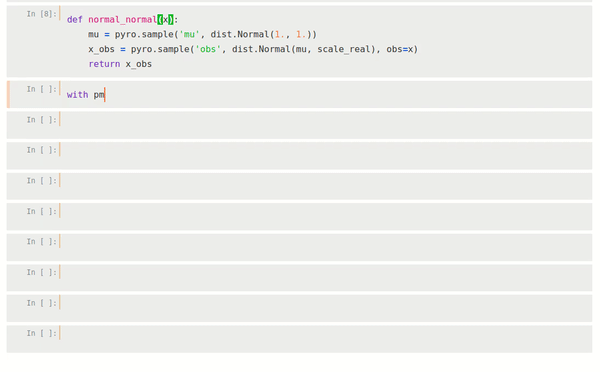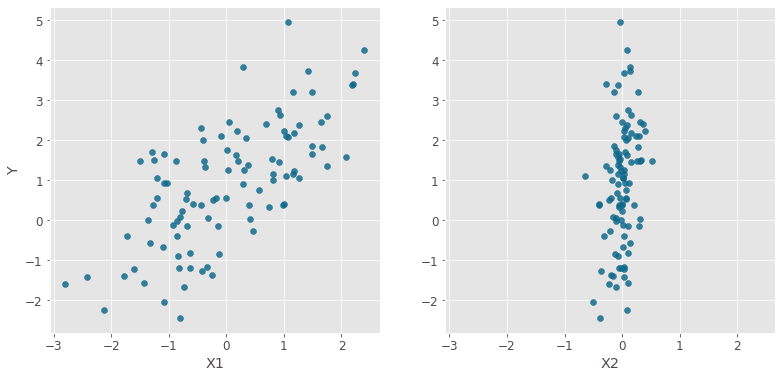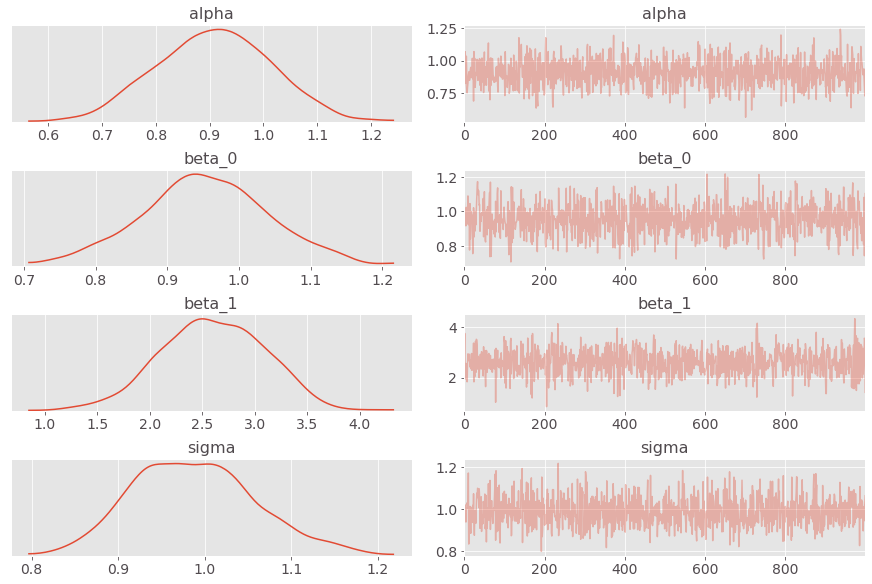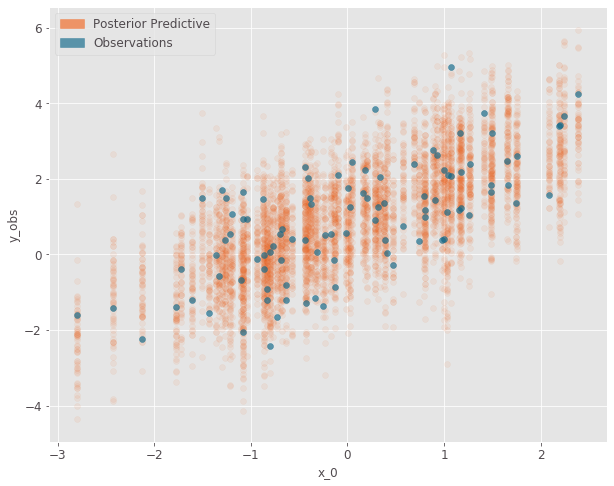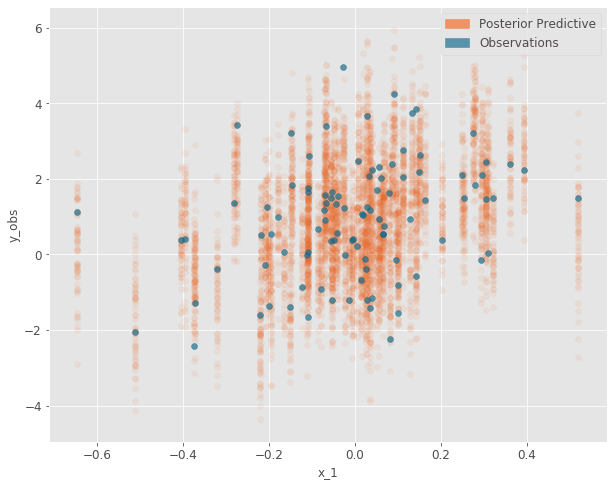suriyadeepan / Pm Pyro
Labels
Projects that are alternatives of or similar to Pm Pyro
PyMC3-like abstractions for pyro's stochastic function.
Define a model as a stochastic function in pyro.
Use pm_like wrapper to create a PyMC3-esque Model.
Random variables are exposed to user as attributes of Model.
pm-pyro provides abstractions for sampling-based inference methods (NUTS - The No-U-Turn Sampler, HMC - Hamiltonion Monte Carlo), as well as Variational Inference (SVI with autoguides), trace plots, posterior plot and posterior predictive plots.
Install
Install from pypi
pip install pm-pyro
Developer setup
# install requirements
pip install -r requirements-dev.txt
# run tests
python -m pytest pmpyro/tests.py
Example
Borrowed the example from a PyMC3 tutorial. The outcome variable Y is dependent on 2 features X_1 and X_2. The notebook for this example is available here
Model Specification
We design a simple Bayesian Linear Regression model.
Stochastic Function
The model specification is implemented as a stochastic function.
import pyro.distributions as dist
import pyro
import torch
def pyro_model(x1, x2, y):
alpha = pyro.sample('alpha', dist.Normal(0, 10))
beta = pyro.sample('beta',pdist.Normal(torch.zeros(2,), torch.ones(2,) * 10.))
sigma = pyro.sample('sigma', dist.HalfNormal(1.))
# Expected value of outcome
mu = alpha + beta[0] * x1 + beta[1] * x2
# Likelihood (sampling distribution) of observations
return pyro.sample('y_obs', dist.Normal(mu, sigma), obs=y)
Context-manager Syntax
The pm_like wrapper creates a PyMC3-esque Model.
We can use the context manager syntax for running inference.
pm.sample samples from the model using the NUTS sampler.
The trace is a python dictionary which contains the samples.
from pmpyro import pm_like
import pmpyro as pm
with pm_like(pyro_model, X1, X2, Y) as model:
trace = pm.sample(1000)
sample: 100%|██████████| 1300/1300 [00:16, 80.42it/s, step size=7.49e-01, acc. prob=0.911]
Traceplot
We can visualize the samples using traceplot.
Select random variables by passing them as a list via var_names = [ 'alpha' ... ] argument.
pm.traceplot(trace)
Plot Posterior
Visualize posterior of random variables using plot_posterior.
pm.plot_posterior(trace, var_names=['beta'])
Posterior Predictive Samples
We can sample from the posterior by running plot_posterior_predictive or sample_posterior_predictive with the same
function signatures as the stochastic function def pyro_model(x1, x2, y), replacing observed variable Y with None.
ppc = pm.plot_posterior_predictive(X1, X2, None,
trace=trace, model=model, samples=60,
alpha=0.08, obs={'y_obs' : Y})
Trace Summary
The summary of random variables is available as a pandas array.
pm.summary()
License
This project is licensed under the GPL v3 License - see the LICENSE.md file for details


